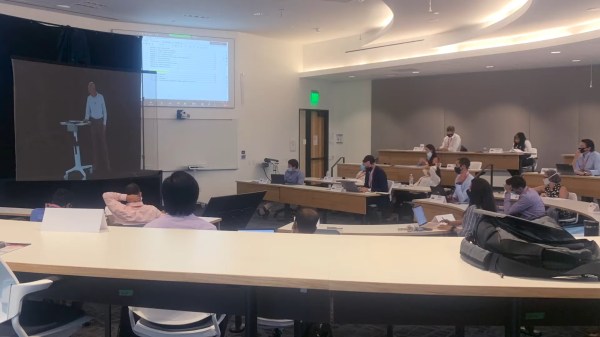Authenticator app aims to provide professors with real-time hybrid class attendance data

A digital authentication company called Smartphone Access for Everyone is testing software at three colleges that automatically tracks which students log in to class online and in-person.
The company, also known as SAFE, announced Wednesday that Boston College, the University of the Bahamas and Marist College, in Poughkeepsie, New York, are the initial partners for its OnTime Meeting Manager, which aims to make it easier for instructors to track who is attending class when students are both online and in-person.
Students register in the system with a username and an email, and then the instructor sends out a link for the class when it starts. Students then click the link and select whether they’re attending online or in-person. The software then collects that data and creates a dashboard for the instructor, who can see who didn’t respond as well as who they should see on video versus in the classroom.
SAFE’s founder, David Schropfer, said the company ran an early-stage pilot with Marist College and initially just used the tool for online learners, but a professor asked if the app could be extended to in-person students.
“The need turned out to really be that in higher ed, teachers don’t know who’s in the class and more importantly, they don’t know who should be in the class, but hasn’t arrived yet,” he said. “That’s always been a problem but in the world of hybrid classes where some of your students are online, and some of your students are sitting right in front of you, that problem is exacerbated.
Video-conferencing platforms like Zoom have attendee reporting tools, but they are not designed to also collect information on in-person attendance. SAFE’s pilots at the three schools will collect more data on how instructors use the software so the company can tweak the product.
“We’ve seen anywhere from three minutes of just taking attendance, getting the Zoom meeting going, trying to let the stragglers come in, which is just a whole wholly wasted period of time,” Schropfer said. “So three-to-five minutes to adjust to start your class and get to the content versus one minute to start your class and get to the content. That’s real time that really adds up to hundreds of hours saved for the students and for the faculty in a single semester.”
Universities will also share data from the other tools from SAFE, including the company’s authenticator, which aims to reduce the number of students using passwords, according to a news release. The authenticator is designed so once a student goes through the process of setting up an account and username they don’t need to remember individual passwords, similar to when websites integrate the option for users to log on using a Google or Facebook account. When a user signs in through SAFE, the authenticator sends a push to their smartphone which they then approve. The authenticator uses built-in biometrics, like facial recognition, for verification.
The authenticator is used for the attendance software as well, Schropfer said, so students don’t need a password to get into their Zoom meeting.
“Getting rid of passwords is really at the core of everything we do here,” he said.


